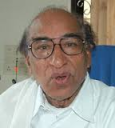Abstract: This paper reviews the circumstances in which the concept of miasm evolved and how
subsequent developments in medicine have improved our understanding of the cause
of diseases. It concludes with an emphasis on the need to further refine the
homeopathic concept of disease. Homeopathy (2009) 98, 177–180.
Keywords: miasm; germ theory; Louis Pasteur; Koch’s postulates; psora; syphilis; condyloma acuminatum
Introduction
The concept of miasm is one of the most controversial aspects of homeopathy. Their evolution, exact nature and how Hahnemann came to consider them the fundamental cause of both acute and chronic disease are areas where opinions of the homeopaths are divided. In order to understand the evolution of the concept of miasm we have to study the state of medicine during the time of Hahnemann.
Concept of acute miasm
In Hahnemann’s time very little was known about the etiology and pathogenesis of any disease, including acute infectious diseases. Although scientific world was aware of the existence of microorganisms, their relation with diseases was not fully appreciated. But because of their uniform clinical presentation the acute infectious diseases were recognized as distinct clinical entities even before the discovery of their exact causative factors. Hahnemann used the term ‘acute miasm’ for all such acute infectious diseases. In aphorism 73 of the Organon (6th edition) he mentions acute miasm as recurring in the same manner and hence known by some traditional name. To explain the mechanism of spread of these acute miasms among people he wrote, explaining the term ‘dynamic influence’ in the footnote to the 11th aphorism of the Organon ‘‘just as a child with small pox or measles communicates to a near, untouched healthy child in a invisible manner (dynamically) the small pox or measles, that is, infect it at a distance without anything from the infective child going or capable of going to the one to be infected.’’
The above excerpt clearly indicates that he used the word dynamic to symbolize phenomena that cannot be seen and hence cannot be explained. Hahnemann was not optimistic about finding causative factors for acute infectious diseases inside the body of the patients. Neither was he in favor of denoting them as distinct clinical entities. He tried to deal with the question of how acute diseases are caused andhow they are transmitted from one person to another by ascribing them to dynamic noxious influences (miasms).
There were two basic factors behind Hahnemann’s theory. The first was the repeated but unsuccessful attempts made by physicians to identify the cause of these acute infectious diseases in the tissues and morbid discharges of the patients. As we now know, there were technological constraints: although much before Hahnemann, Anthony Leeuwenhoek (1632–1723), had invented the microscope through which he observed the presence of microorganisms in his own body secretions. But he and other workers did not relate them to human disease and simply reported their findings. The absence of a clear understanding of the etiological factors and pathogenesis of these diseases created a fertile soil for theories and assumptions many of which now seem absurd. As a result absurd and often hazardous methods were used in treating these acute diseases.
The second factor was the discovery of the Law of Similars by Hahnemann. This enabled him to treat acute infectious disease conditions in a safe and effective manner. The good results which he achieved in the treatment of acute diseases through the Law of Similars, convinced him that this approach was the only correct way of treating acute diseases.
At the same time repeated failures met by allopathic physicians in treating the same acute diseases were reason enough for him to conclude that there is nothing hidden inside the body which causes disease (see aphorism 13 for example).1 The endeavors of conventional physicians were therefore completely rejected by Hahnemann and his disciples.
The ‘causative factor of disease’ remained a black box until the second half of 19th century when an important breakthrough was achieved with the consolidation of the germ theory of disease by Louis Pasteur and Robert Koch in the late 1870s.2 Even before Pasteur and Koch, Edward Jenner laid the groundwork for the germ theory. In 1796 he took a major therapeutic step towards the development of vaccination. In his paper ‘An inquiry into the causes and effects of the Variolae Vaccinae – known by the name of the cow-pox’,3 published in 1798 he reported how, over a period of years, he had observed the immunity provided by cowpox against small pox. Hahnemann refers Jenner’s observations in the Organon (aphorism 46). Although, like Hahnemann, Jenner had no theoretical insight into the biological mechanism of resistance to diseases, vaccination became a lasting prophylactic technique on purely empirical grounds. We now understand more about the host’s immune response to a cross-reacting virus variant.
But was the germ theory of disease, due to Pasteur and Koch that set a new course for studying and contending with infectious diseases. Louis Pasteur explained many well-known biological processes, whose precise mechanisms were unknown. Before Pasteur putrefaction and other similar processes were often perceived as dynamic phenomenon. Pasteur demonstrated that both putrefaction and fermentation were due to the growth of microorganisms. He also demonstrated that these microorganisms do not appear spontaneously but originate in the surrounding environment thus discrediting the theory of spontaneous generation. Pasteur’s research on fermentation and so-called spontaneous generation inevitably led him to the study of infectious diseases.
He had recently demonstrated that if environmental yeasts are prevented from being deposited on grapes, the juices of these grapes will not ferment, when he wrote ‘‘By analogy, is it unreasonable to hope that the day will come when easily administered preventive measures will be able to stop the scourges which terrify and decimate populations, such as yellow fever and the bubonic plague?’’ In other words, infectious diseases are, like fermentation, probably due to ‘germs’ and it may be possible to protect human beings against them as one can protect grapes against yeast. Pasteur’s work on the microbial basis of fermentation and similar biological processes gave a strong credence to the hypothesis for microbial origin of disease. Although he provided the clue towards the relationship between microorganisms and infectious diseases the experimental proof about the role of specific microbe in specific disease was still lacking.
By the end of 19th century the causative agents of various infectious diseases were being reported by different investigators in such profusion that it was necessary to introduce criteria for proving the claims that a microorganism isolated from a disease was indeed causally related to it. These criteria, first indicated by Henle, were enunciated by Robert Koch. According to ‘Koch’s postulates’ a microorganism can be accepted as the causative agent of an infectious disease only if the following conditions are satisfied:
1. The bacterium should be constantly associated with the lesions of the disease.
2. It should be possible to isolate the bacterium in pure culture from the lesions.
3. Inoculation of such pure culture into suitable laboratory animals should reproduce the lesions of the disease.
4. It should be possible to reisolate the bacterium in pure culture from the lesions produced in the experimental animals.
5. An additional criterion introduced subsequently requires that specific antibodies to the bacterium should be demonstrable in the serum of patients suffering from the disease.[5,6]
Even today, Koch’s postulates are applied whenever a new infectious disease [such as human immunodeficiency virus (HIV) infection/acquired immune deficiency syndrome (AIDS)] arises. Koch placed the germ theory of diseaseon a firm experimental footing. He experimentally demonstrated the causative organisms of tuberculosis and cholera. His techniques of disinfection and sterilization not only enabled laboratory research but also quarantineand other public health measures like water filtration inthe control of cholera and typhoid.[7]
The cause that was considered to be ‘dynamic or invisible’ by Hahnemann and his contemporaries was no longer invisible. Infectious diseases were once thought to be caused by wrath of gods, configuration of stars or miasmas, after a struggle that lasted for almost a century and included stupendous work from people like Pasteur and Koch, they were proved to be caused by microorganisms. The germ theory of disease not only provided a suitable ground for developing appropriate treatment for infectious diseases butalso gave an opportunity of reducing their incidence in community by controlling the spread of causative microorganism.
Thus was born the idea of ‘preventive medicine’. Homeopathic physicians also achieved great success in
treating cases of acute infectious diseases but the homeopathic world largely remained uninfluenced by the growing knowledge about the nature of infectious diseases and their relation with microorganisms. As a result homeopathic physicians have no answer to problems like treatment of a carrier or a subclinical case of infectious disease, prevention of infectious disease, etc.
Concept of chronic miasm
For Hahnemann miasms were symbolic of disease cause. He always believed that actual cause will always remain hidden and will never be discovered. But Hahnemann soon realized the drawback of not recognizing the cause of disease when he found that while the similia principle can be successfully applied in the treatment of acute diseases, medicines prescribed according to the same principle failed to give lasting relief in chronic diseases.




